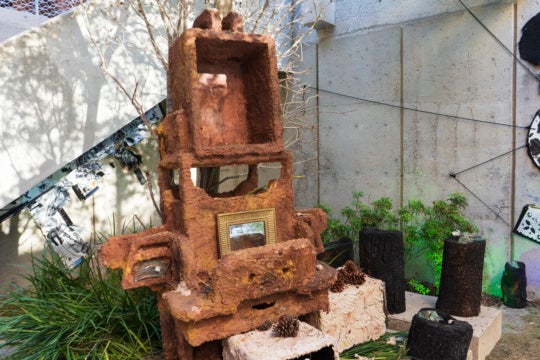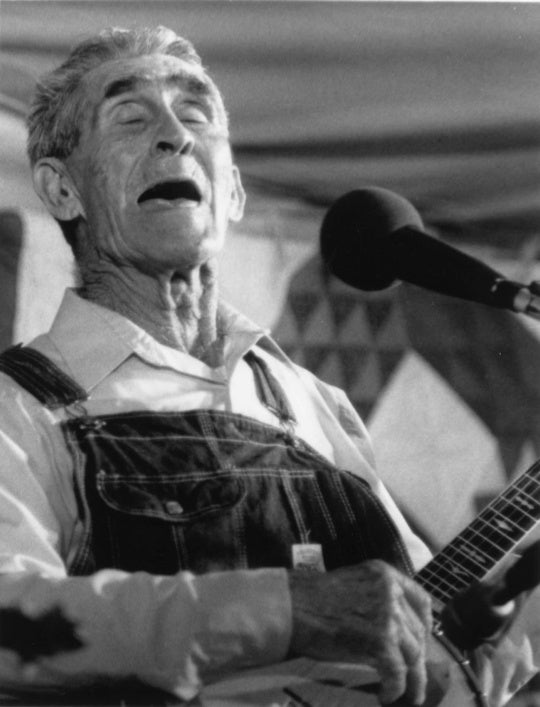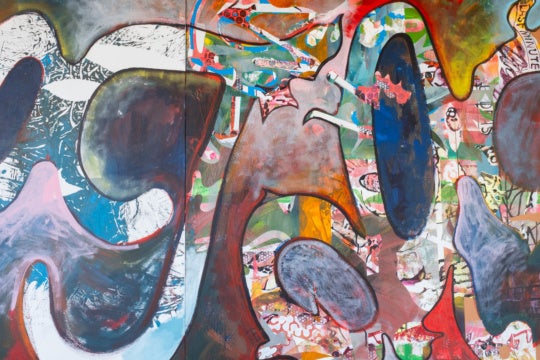
The French artist Christian Boltanski once said: “…you die twice. You die when you die, and you die a second time when someone picks up your photo and no one knows who you are.” Canadian artist Sara Angelucci combines faith and science to create strange, hybrid creatures. The inspiration for Aviary, her latest series of photographs on view at the Halsey Institute of Contemporary Art through December 10, emerged when she was working on The Anonymous Chorus, a video installation based on a vintage photograph she purchased on eBay. She says she was saddened by the fact that photographs, which were once personally meaningful to and held dearly by someone, go anonymously into the world. She began to examine the impermanence of memory and lost identities, looking to Boltanski, whose work deals with loss, memory and death.
The 19th century was a time of great change and scientific exploration. Cartes de visite, small portrait photographs that could be cheaply produced in large quantities, became popular during this time. Photographs were often displayed in family albums in the parlor, along with other objects to illustrate the family’s class and cultural sophistication. Angelucci explains that the Victorian parlor was a cultural and spiritual space for many upper-class Europeans who brought exotic items home from their travels to display in “Cabinets of Curiosities.” Angelucci has fused these concepts of death, cultural curiosity, and preservation in her startling portraits.

Angelucci is based in Toronto, a city that houses the world’s 13th largest ornithology collection in its Royal Ontario Museum (ROM). She describes the feeling of holding an extinct species in her hand as heart-wrenching. This experience with endangered and extinct birds shifted the focus of her project; she realized empathy was at the core. The desire to change the way we see ourselves as larger and more valuable than these species drove Angelucci to combine images of birds with those of human eyes, ears, and hair.
To create these images, Angelucci set up a temporary, digital photography studio in the lab at ROM, where she had access to thousands of drawers filled with birds. Back in her studio, she established certain parameters for the portraits, such as staying true to gender and only using anonymous portraits from eBay. “The beak has to have been photographed at the same angle as the face or the combination wouldn’t be convincing,” she explains.
The images are exquisite and provocative. Upon first glance, a sensation of the absurd draws the viewer closer. Is this image meant to be funny or sad? Because feathers mask any facial expressions, we are left to search the subjects’ eyes for understanding. Through a time-consuming process, Angelucci skillfully blends the portraits with the images of birds. Some images are more birdlike than human. In Barn Owl, Endangered, for example, the portrait of a woman is only faintly visible beneath an owl. Her eyes peer out of face that features soft, fine feathers and a pointed beak. In Red-headed Woodpecker/Endangered, a woman’s face is more prominent. Earrings hang from her earlobes, and a curl of hair peeks out from a gorgeous red feather. The subject stares directly at the viewer with solemn eyes, perhaps challenging us to question what will become of each of us when we are gone. Angelucci says she was not thinking about life after death in the creation of this work, but understands that the interpretation of the work is left to the viewer. To me, the works suggest that in the afterlife the balance of humans and birds will be righted.
Amy Mercer is a writer living in Charleston, South Carolina.




